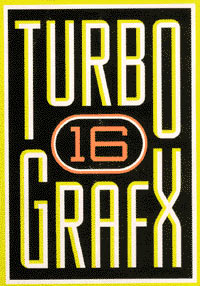|
Gradius
is a series of shooter ( shoot'em up) video games, introduced in 1985, developed and published by Konami for a variety of portable, console and arcade platforms. In many games in the series, the player controls a ship known as the Vic Viper. Games *'' Scramble'' (1981) An early horizontal-scrolling shooter from which gameplay elements of the Gradius series were inspired. Although there is no canonical relationship between ''Scramble'' and the Gradius series, ''Scramble'' is implied to be a spiritual predecessor to the series, evident by its appearance in flashbacks during Gradius introduction sequences ('' Gradius Advance''). ''Scramble'' has been ported to other platforms, including MSX and Commodore 64. In 2002, ''Scramble'' appeared on GBA as one of the titles featured in ''Konami Collector's Series: Arcade Advanced'' as well as later Konami game compilations for PlayStation and Nintendo DS. *'' Gradius'' (1985) The first true Gradius game to introduce the concept of t ... [...More Info...] [...Related Items...] OR: [Wikipedia] [Google] [Baidu] |
Gradius (video Game)
is a 1985 side-scrolling shooter video game developed and published by Konami for Arcade video game, arcades. It is the first installment in the Gradius, ''Gradius'' series. The player maneuvers a spacecraft known as the Vic Viper that must defend itself from the various alien enemies. The game uses a power-up system called the "power meter", based upon collecting capsules to purchase additional weapons. The arcade version of ''Gradius'' was initially released internationally outside Japan under the title of ''Nemesis'', but subsequent home releases have since used the original title. During development, it had the working title ''Scramble 2'', as it was originally intended to be a follow-up to Konami's earlier shooter ''Scramble (video game), Scramble'' (1981). Home versions were released for various platforms, such as the Nintendo Entertainment System, the MSX home computer, and the TurboGrafx-16, PC Engine. It was a major success in 1986, becoming the year's highest-grossing a ... [...More Info...] [...Related Items...] OR: [Wikipedia] [Google] [Baidu] |
Salamander (video Game)
, retitled in North America and in the Japanese arcade re-release, is a scrolling shooter arcade video game developed and published by Konami. Released in 1986 as a spin-off of ''Gradius'', ''Salamander'' introduced a simplified power-up system, two-player cooperative gameplay and both horizontally and vertically scrolling stages. Some of these later became normal for future ''Gradius'' games. In Japanese, the title is written using ateji, which are kanji used for spelling foreign words that has been supplanted in everyday use by katakana. '' Contra'', another game by Konami was also given this treatment, with its title written in Japanese as (). ''Salamander'' was followed with a sequel in 1996 titled '' Salamander 2'' and '' Salamander 3'' on August 7 2025. Gameplay The first player controls Vic Viper and the second player takes the reins of debuting spacecraft Lord British, which is sometimes referred to as "Road British" due to the ambiguity of Japanese-to-English romaniza ... [...More Info...] [...Related Items...] OR: [Wikipedia] [Google] [Baidu] |
Shoot 'em Up
Shoot 'em ups (also known as shmups or STGs) are a Video game genre, subgenre of action games. There is no consensus as to which design elements compose a shoot 'em up; some restrict the definition to games featuring spacecraft and certain types of character movement, while others allow a broader definition including characters on foot and a variety of perspectives. The genre's roots can be traced back to earlier shooting games, including target shooting electro-mechanical games of the mid-20th-century, but did not receive a video game release until ''Spacewar!'' (1962). The shoot 'em up genre was established by the hit arcade game ''Space Invaders'', which popularised and set the general template for the genre in 1978, and has spawned many clones. The genre was then further developed by arcade hits such as ''Asteroids (video game), Asteroids'' and ''Galaxian'' in 1979. Shoot 'em ups were popular throughout the 1980s to early 1990s, diversifying into a variety of subgenres such ... [...More Info...] [...Related Items...] OR: [Wikipedia] [Google] [Baidu] |
Virtual Console
The Virtual Console was a line of downloadable retro video games for Nintendo's Wii and Wii U home video game consoles and the Nintendo 3DS family of handheld systems. The Virtual Console lineup consisted of titles originally released on past home and handheld consoles and were run in their original forms through software emulation (excluding Game Boy Advance titles on the 3DS and Wii titles on Wii U), therefore remaining mostly unaltered, and could be purchased from the Wii Shop Channel or Nintendo eShop for between 500 and 1,200 Wii Points, or using real currency, with prices depending on the system, rarity, and/or demand. On Wii and Wii U, the Virtual Console's library of past games consisted of titles originating from the Nintendo Entertainment System (NES), Super Nintendo Entertainment System (SNES), Game Boy, Game Boy Color, Nintendo 64, Game Boy Advance, and Nintendo DS, as well as Sega's Master System, Genesis and Game Gear, NEC's TurboGrafx-16, and SNK' ... [...More Info...] [...Related Items...] OR: [Wikipedia] [Google] [Baidu] |
Otomedius
is a side-scrolling shooter video game by Konami which features personification of space fighters from various Konami games. The game's title is a pun, being a portmanteau of the terms " Otome" and " Gradius", with a set of equipment resembling space fighters from ''Gradius''. ''Otomedius'' was released as an arcade game in Japan on October 15, 2007. It received an Xbox 360 port titled ''Otomedius Gorgeous!'' in 2008. A sequel, '' Otomedius Excellent'', was released in 2011. Versions ''Otomedius'' is Konami's first arcade shooter since '' Gradius IV: Resurrection'' in 1999. The arcade title was announced in AOU2007 Amusement Expo on February 16, 2006, with test version available. Unlike previous Konami's arcade shooters, player can continue after losing all lives using a single credit. Player can choose which stage to play, with maximum of three stages playable using 1 credit. There are 4 stages in each game, with 4 (normal, hard, expert, ultimate) difficulty settings. ... [...More Info...] [...Related Items...] OR: [Wikipedia] [Google] [Baidu] |
Konami
, commonly known as Konami, , is a Japanese multinational entertainment company and video game developer and video game publisher, publisher headquartered in Chūō, Tokyo, Chūō, Tokyo. The company also produces and distributes trading cards, anime, ''tokusatsu'', pachinko machines, slot machines, and List of Japanese arcade cabinets, arcade cabinets. It has casinos around the world, and operates health and physical fitness clubs across Japan. The company originated in 1969 as a jukebox rental and repair business in Toyonaka, Osaka, Japan, by Kagemasa Kōzuki, who remains the company's chairman. Additionally, Konami owns Bemani, known for ''Dance Dance Revolution'' and ''Beatmania'', as well as the assets of former game developer Hudson Soft, known for ''Bomberman'', ''Adventure Island (video game), Adventure Island'', ''Bonk (series), Bonk'', ''Bloody Roar'', and ''Star Soldier''. Konami is the twentieth-largest Lists of video game companies, game company in the world by re ... [...More Info...] [...Related Items...] OR: [Wikipedia] [Google] [Baidu] |
PC Engine
The TurboGrafx-16, known in Japan as the , is a home video game console developed by Hudson Soft and manufactured by NEC. It was released in Japan in 1987 and in North America in 1989. The first console of the fourth generation, it launched in Japan to compete with Nintendo's Famicom, but its delayed U.S. debut placed it against the more advanced Sega Genesis and later the Super NES. The TurboGrafx-16 features an 8-bit CPU paired with dual 16-bit graphics processors, and supports up to 482 on-screen colors from a palette of 512. The "16" in the console’s North American branding was criticized as misleading. With dimensions of , the PC Engine remains the smallest major home console ever released. Games were initially released on HuCard cartridges, but the platform later supported additional formats requiring separate hardware: TurboGrafx-CD (''CD-ROM²'' in Japan) games on compact disc, SuperGrafx games on a new console variant, and LD-ROM² games on LaserDisc via the ... [...More Info...] [...Related Items...] OR: [Wikipedia] [Google] [Baidu] |
Parodius (series)
is a series of cute 'em ups developed and published by Konami. The games are tongue-in-cheek parodies of ''Gradius'', and also feature characters from many other Konami franchises. Video games There are six games in the Parodius series. The last of them, ''Paro Wars'', is a spin-off strategy game. The only games released outside Japan are ''From Myth to Laughter'' and ''Fantastic Journey'', which received European localizations. None of them were released in the Americas. Parodius games have been ported to several different platforms, including arcade machines, mobile phones, and home consoles. Compilations Pachinko machines In addition to the video games, a number of Parodius-themed pachinko mechanical games have been released in Japan: * ''Little Pirates'' (1998) * ''CR Parodius Da! EX'' (2000) * ''CR Parodius Da! ZE'' (2000) * ''CR Parodius Da! 2'' (2000) * ''CR Saikoro Chindōchū'' (2004) * ''CR Gokujō Parodius!'' (2006) * ''Gokuraku Parodius'' (2010) * ''Gokuraku ... [...More Info...] [...Related Items...] OR: [Wikipedia] [Google] [Baidu] |
Super Nintendo Entertainment System
The Super Nintendo Entertainment System, commonly shortened to Super Nintendo, Super NES or SNES, is a Fourth generation of video game consoles, 16-bit home video game console developed by Nintendo that was released in 1990 in Japan, 1991 in North America, 1992 in Europe and Oceania and 1993 in South America. In Japan, it is called the In South Korea, it is called the Super Comboy and was distributed by SK Hynix, Hyundai Electronics. The system was released in Brazil on August 30, 1993, by Playtronic. In Russia and Commonwealth of Independent States, CIS, the system was distributed by Steepler from 1994 until 1996. Although each version is essentially the same, several forms of regional lockout prevent cartridges for one version from being used in other versions. The Super NES is Nintendo's second programmable home console, following the Nintendo Entertainment System (NES). The console introduced advanced graphics and sound capabilities compared with other systems at the time. ... [...More Info...] [...Related Items...] OR: [Wikipedia] [Google] [Baidu] |
Vectrex
The Vectrex is a vector display-based home video game console, the only one ever designed and released for the home market, that was developed by Smith Engineering and manufactured and sold by General Consumer Electronics. It was first released for the North America market in October 1982 and then Europe and Japan in 1983. Originally produced by General Consumer Electronics, it was later licensed to Milton Bradley after they acquired the company. Bandai released the system in Japan under the name 光速船, meaning Lightspeed. The Vectrex, in contrast to other video game systems at the time, did not need to be hooked up to a television set; it had an integrated (vertically oriented) monochrome CRT monitor. A detachable wired control pad could be folded into the lower base of the console. Games came with translucent color overlays to place over the screen. Optional peripherals include a pair of 3D goggles known as the "3D Imager" and a light pen for drawing directly on the screen ... [...More Info...] [...Related Items...] OR: [Wikipedia] [Google] [Baidu] |
Tomy Tutor The Tomy Tutor, originally sold in Japan as the and in the UK as the Grandstand Tutor, is a home computer produced by the Japanese toymaker Tomy. It is architecturally similar, but not identical, to the TI-99/4A, and uses a similar Texas Instruments TMS9900 16-bit CPU. |



